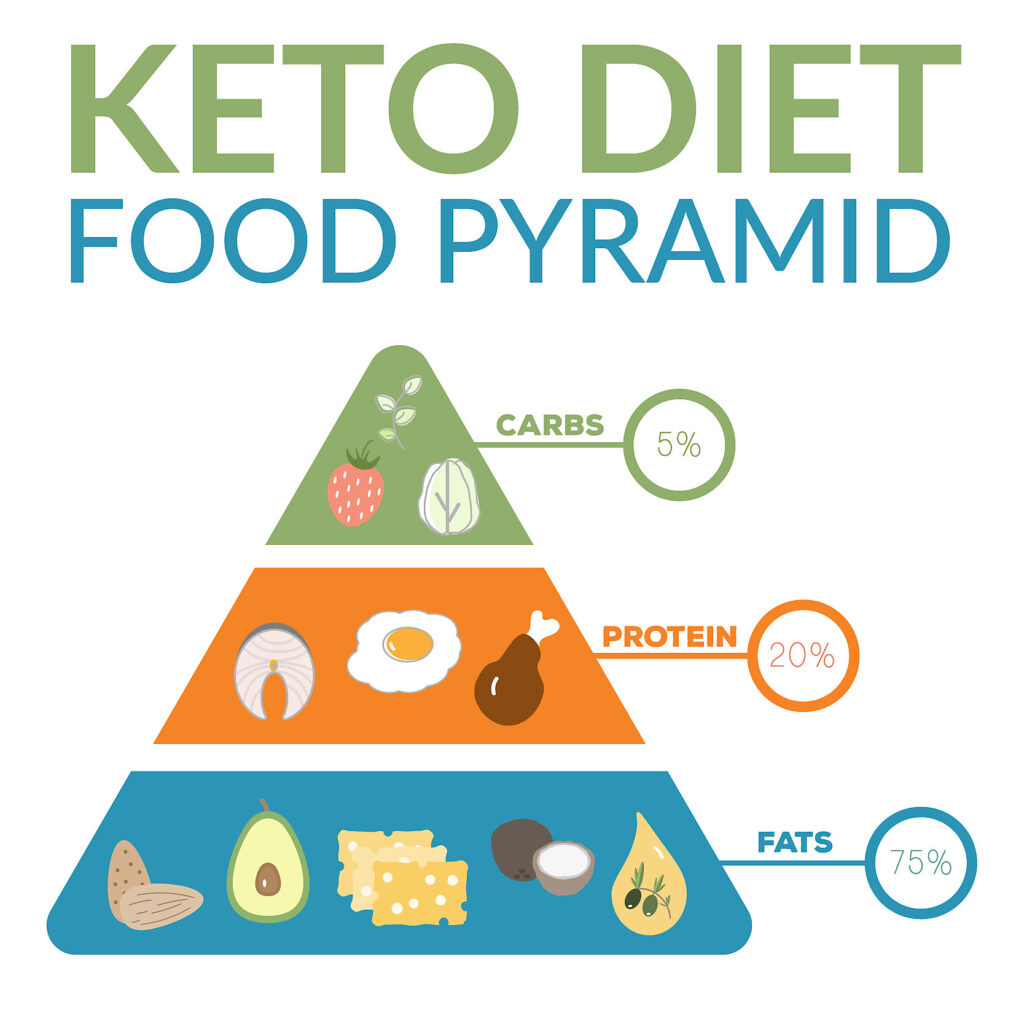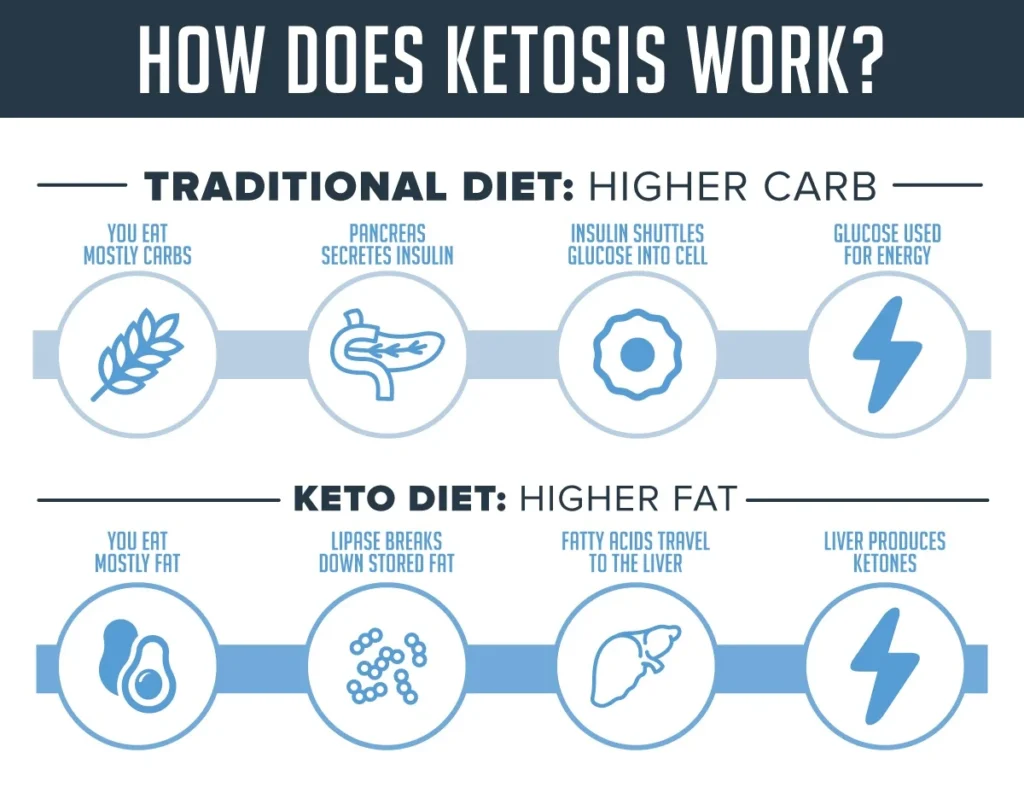How to Do the Keto Diet Correctly for Fast and Lasting Results?
The keto diet has gained massive popularity as an effective way to lose weight, improve energy levels, and enhance mental clarity. But simply cutting carbs isn’t enough—you need a solid strategy to maximize your results. In this guide, we’ll explore how to do the keto diet and get good results by focusing on proper food choices, meal planning, common mistakes to avoid, and practical lifestyle adjustments.
ABOUT WEIGHT LOSS – READ MORE HERE

The keto diet pyramid is a visual guide that helps structure food choices based on the principles of a ketogenic lifestyle. Unlike the traditional food pyramid, which emphasizes carbohydrates as the base, the keto pyramid prioritizes healthy fats as the foundation, followed by moderate protein intake and minimal carbohydrates.
At the base of the keto pyramid, you’ll find healthy fats like avocados, olive oil, butter, nuts, and seeds. These provide the majority of daily calories and fuel ketosis. Above fats, proteins such as meat, fish, eggs, and poultry take a moderate role, ensuring muscle maintenance and overall body function. The top of the pyramid consists of low-carb vegetables like leafy greens, cauliflower, and zucchini, which supply essential vitamins and fiber. At the very tip, high-carb foods such as grains, sugar, and starchy vegetables are strictly limited or avoided to maintain ketosis.
By following this structure, the keto diet promotes fat burning, steady energy levels, and metabolic efficiency, making it an effective strategy for weight loss and overall health.
Understanding the Keto Diet: More Than Just Low-Carb
Many people think keto is just about cutting carbs, but it’s actually a metabolic shift. The goal is to enter a state called ketosis, where your body burns fat for fuel instead of glucose. To achieve this, you need to keep your carb intake low (usually under 50g per day), increase your healthy fat consumption, and moderate your protein intake.
Some key benefits of the keto diet include:
- Weight loss: Burning fat for fuel leads to a steady reduction in body fat.
- Stable energy levels: No more energy crashes caused by sugar spikes.
- Mental clarity: Many people experience improved focus and cognitive function.
- Better metabolic health: Helps regulate blood sugar and insulin levels.

Best Foods to Eat on the Keto Diet
To get good results, focus on nutrient-dense foods that support ketosis. Here’s what you should include in your meal plan:
- Healthy fats: Avocados, olive oil, coconut oil, grass-fed butter, and nuts.
- Proteins: Fatty fish (salmon, sardines), eggs, grass-fed beef, poultry, and pork.
- Low-carb vegetables: Spinach, kale, broccoli, zucchini, and cauliflower.
- Full-fat dairy: Cheese, heavy cream, Greek yogurt.
- Nuts and seeds: Almonds, walnuts, chia seeds, flaxseeds.
Avoid high-carb foods like bread, pasta, rice, potatoes, and sugary snacks. Even some fruits, like bananas and apples, can kick you out of ketosis.
How to Transition into Ketosis Smoothly

The first few days of keto can be tough, especially if you experience the “keto flu”—a temporary set of symptoms like fatigue, headaches, and brain fog. Here’s how to make the transition easier:
- Stay hydrated: Drink plenty of water and add electrolytes (sodium, potassium, magnesium) to avoid dehydration.
- Gradually reduce carbs: Instead of cutting them suddenly, lower your intake over a few days.
- Increase fat intake: Eat more healthy fats to help your body adapt.
- Get enough sleep: Poor sleep can make keto adaptation harder.
- Exercise moderately: Light activities like walking or yoga help your body adjust to burning fat.
Common Keto Mistakes and How to Avoid Them
Many people struggle with keto because they unknowingly make mistakes. Here are the most common ones and how to fix them:
- Not eating enough fat: Fat should make up 70-80% of your daily intake.
- Consuming too much protein: Excess protein can be converted into glucose, slowing ketosis.
- Eating hidden carbs: Always check food labels—many processed foods contain sneaky carbs.
- Neglecting electrolytes: Lack of sodium, magnesium, and potassium can cause fatigue and cramps.
- Giving up too soon: The first week is the hardest. Stick with it, and your body will adapt.
Maintaining Long-Term Success on Keto
Once you’re in ketosis, it’s important to sustain your progress. Here’s how to do the keto diet and get good results long-term:
- Meal prep: Plan and prepare your meals in advance to avoid temptation.
- Track macros: Use apps like MyFitnessPal or Carb Manager to monitor your intake.
- Listen to your body: Adjust your fat, protein, and carb intake based on how you feel.
- Experiment with fasting: Intermittent fasting can enhance fat burning and metabolic flexibility.
- Enjoy keto-friendly treats: Make low-carb versions of your favorite foods to stay on track.
ABOUT WEIGHT LOSS – READ MORE HERE
Conclusion
Following the keto diet correctly can lead to incredible results, but success comes down to proper planning, consistency, and avoiding common mistakes. By focusing on nutrient-dense foods, tracking your intake, and staying patient through the transition phase, you can achieve sustainable weight loss and improved health. Have you tried keto before? Share your experience in the comments below!
FAQ
How long does it take to enter ketosis?
Most people enter ketosis within 2-7 days, depending on their carb intake, activity level, and metabolism.
Can I eat fruit on keto?
Some fruits, like berries, are low in carbs and can be eaten in moderation. However, high-carb fruits like bananas and apples should be avoided.
What are the signs that I’m in ketosis?
Common signs include increased energy, reduced appetite, improved focus, and a metallic taste in the mouth.
Is the keto diet safe for everyone?
While keto is generally safe, those with certain medical conditions (like diabetes or kidney disease) should consult a doctor before starting.
What should I do if I hit a weight loss plateau?
Try adjusting your macros, incorporating intermittent fasting, or increasing physical activity to break through plateaus.

Writer and web developer with a background in Biomedicine and a postgraduate degree in Immunohematology.


One thought on “How to Do the Keto Diet Correctly for Fast and Lasting Results?”